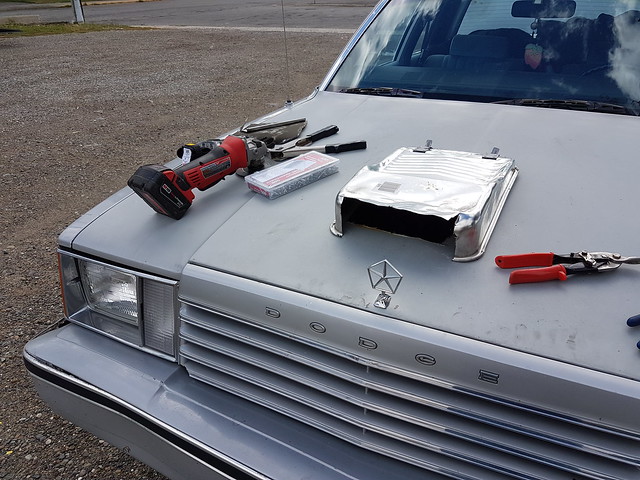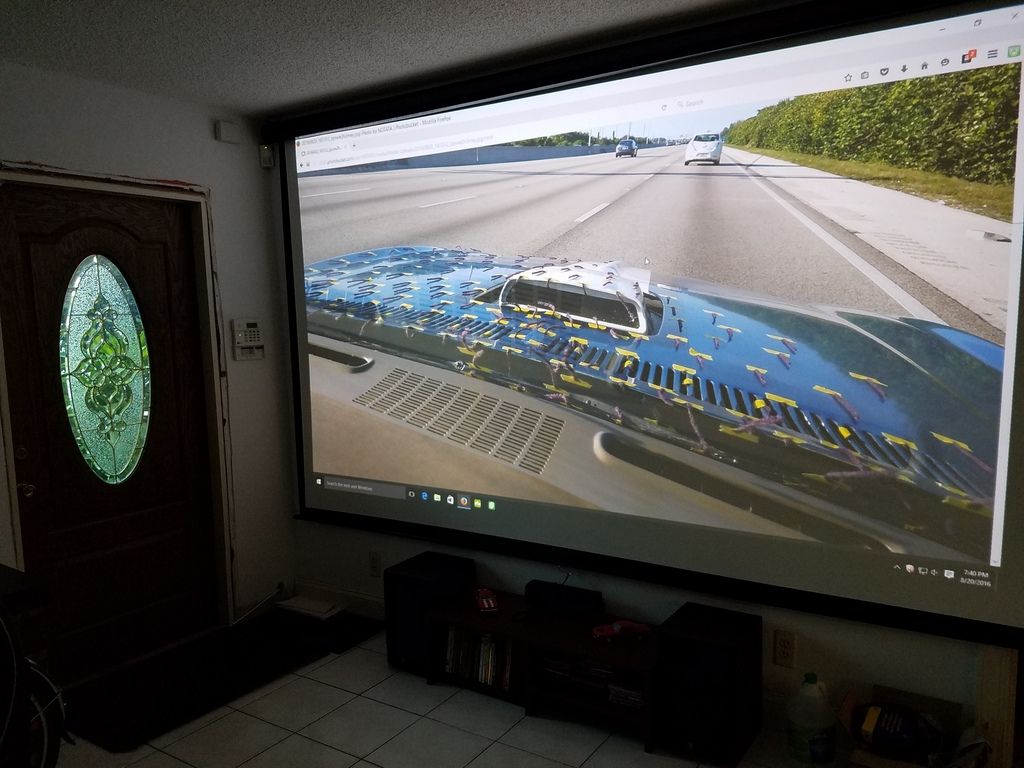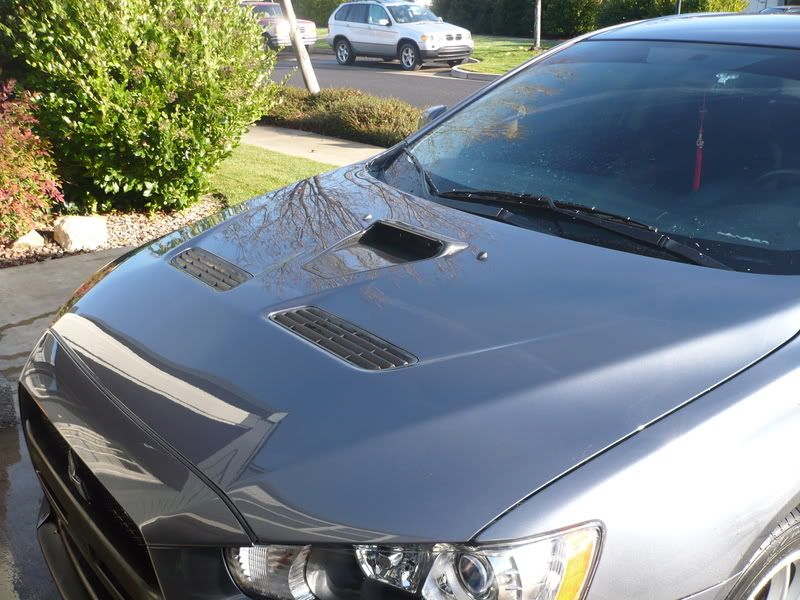I'm wondering about packaging. Race cars are one thing, but the guys who really need cooling are the track day street cars. IC, AC, PS cooler, fans, turbo plumbing - that's the stuff that makes it difficult, especially if you don't want to mess with the crossbar. That thing's structural.
Newer Miatas have angled rads from the factory - IIRC, both NC and ND. The NA/NB are a little tight up front.
SVreX wrote:
My opinion is that hood vents will never exceed the performance benefit of an extractor hood with proper ducting (combined with a splitter/ under tray). Especially considering the under hood pressures are typically created by poor airflow management coming through the grill in the first place (into the dirty air engine bay).
But I have never tested it. 
Well yeah an extractor is much different than just some hood vents.
That's about as risky as saying "In my opinion, with the same car/driver at the same track under the same conditions, Hoosiers will be faster than All-Seasons of the same size."


SVreX
MegaDork
10/18/16 12:22 p.m.
In reply to z31maniac:
Right. They are totally different.
But the thread title is "vents/ extractors", so I think feedback on both is anticipated.
So we're defining "extractor" as a fully ducted system, while "hood vents" are simply air-permeable sections of the hood? In which case, hood vents are a component of an extractor.

n8
New Reader
10/18/16 3:33 p.m.
engiekev wrote:
Where is a good (cheap, this is GRM!) source for an efficient extractor vent?
I don't know about aerodynamically efficient, but the most cost efficient hood vents can be found in the HVAC aisle of your local home improvement store. They've got all shapes and sizes!
Lowe's Hood Vents
Thanks for the continued discussion guys, I'm enjoying this 

Dave
Reader
10/18/16 5:14 p.m.

So I guess the one I mounted on my Dodge Aries rally car wasn't as well thought out as I suspected. 

Yes, you really should have removed the pentastar for more laminar airflow 
But that's a scoop for an inlet. Different set of rules.

kb58
Dork
10/18/16 5:23 p.m.
That right there is good for up to 75 hp
At first I thought it was a disposable roasting pan. Now I realize it's a paint roller tray. I'm not sure if I'm disappointed I was wrong or not.

SVreX
MegaDork
10/19/16 9:06 a.m.
Keith Tanner wrote:
So we're defining "extractor" as a fully ducted system, while "hood vents" are simply air-permeable sections of the hood? In which case, hood vents are a component of an extractor.
Interesting.
I don't think I am qualified to define anything at all. I just know extractor hoods were created a long time ago in racing, and included the ducting system. They perform a particular series of tasks, including reducing underhood temps.
Recently, it seems people have taken the vent component of the extractor system, and installed it without ducting. I don't think that is an extractor system- it's an over sized vent in a poor location that probably doesn't do much for cooling underhood temps. It MIGHT make things worse, if it allows air to bypass the radiator and not cool water properly.
Vents help with underhood temps. So do extractors. Extractor systems also do a lot of other things. Extractor vents installed without ducting are probably pretty useless.
I am not an aerodynamics engineer, but I did stay at a Holiday Inn Express last night! 
Extractor vents can be useful without ducting, but it depends on how well sealed the rad is, etc. As long as air can only really come in through the rad and you don't add so much extraction that air gets pulled up from the bottom, it'll still help a lot compared to an un-vented hood. It just won't be quite as good for cooling as a fully ducted rad (but it'll likely have lower engine bay temps as the rad air will flow through the whole bay).
What is with the rampant speculation and doubt when there are dozens of data sets that show vented hoods do work without ducting that would make it an "extractor?"
Hell there is a guy in this thread with data to show it works and it is somehow being discounted. What is happening to this forum?

The expectation that any vent in a hood is "an oversize vent in a poor location" or "extractor vents installed without ducting are probably pretty useless" is where we disagree. And it's not a recent thing at all, look at the louvers stamped into old school hot rods and E-Types for a counter-example. The hood vents probably predate the full extractor hood.
I've seen them make a difference - we did a bunch of aero research using high tech devices like pieces of string and had some very effective ones on an old race car. Singular Motorsports also did a bunch of testing on theirs, and they claim that underhood pressures are lowered by 50%. They've also got video of tuft testing showing flow through the vents.
Now, if your cooling problems come from an inefficient radiator or airflow that's going around the radiator or poor heat transfer inside the engine or a number of other problems, vents won't help. If you're having trouble with a lack of airflow through the rad, they'll help if done well. Ducting is good, but you can still make a difference without it. It's all about pressure differentials and restrictions.

SVreX
MegaDork
10/19/16 10:55 a.m.
In reply to Keith Tanner:
I'm not disagreeing with you. Not sure where you are getting that.
The only link posted in this thread to an extractor vent is installed in exactly the worst position possible, according to your pdf showing pressure areas on a hood.
I am just reading what you are posting, and agreeing with it (because you have the best information I have seen on the subject).
I see no disagreement at all.
Which link is that, the BMW part? I was speaking more generally than about a specific example, maybe that's the disconnect.
There's always a lot of concern about underhood temps. Personally, I don't care much about the ambient temp underhood, I'm more interested in the temps of the stuff inside the engine as long as nothing is melting 

LanEvo wrote:
I'm doing some work on the 190E 2.3-16 racecar. Race engine is going in: higher compression; more aggressive cams; twin Webers in place of CIS/KJet.
The car has functional aero from the factory and I'm fitting a factory Evo I kit: deeper airdam; adjustable splitter; fender flares; larger rear wing. I've been doing some reading on aero.
What do you guys think of hood vents/extractors to reduce drag, improve flow through radiator, and reduce under-hood temps?
I've seen different configurations: single, central vent behind the radiator (Shelby GT500; Lancer Evo 8/9). Twin vents on the sides of the hood (E46 M3 GTR). A combination of the two (V12 Vantage).
I was thinking about putting a GT500 vent on my hood. There's plenty of space behind the radiator with the 4-banger engine. I could even fab up a scoop/tray to direct hot air from the rear of the rad up toward the hood vent.
Worth the trouble? Total waste of time/energy?
Perhaps our resident race car aerodynamicist Steve Stafford will pop in here and provide some wisdom.
I've been working on aero stuff for many years (not just cars). I'm always learning from testing so I'd suggest testing before any modifications and after. Whether you've got pressure gauges or just yarn tufts you can learn a lot testing and some things will surprise you. A change might have a positive effect on one thing while hurting something else. As an example the WTAC pro cars have huge down force created by big wings & things to help them increase cornering speeds while noticeably reducing their top speeds on the straights because of increased drag. They've found the reduced time they spend in the corners outweighs the increased time on the straights so they end up with a lower lap time. Every track is different so the aero setup on a track with longer or more straights is probably different than tracks with shorter or fewer straights.
In the OP we see "What do you guys think of hood vents/extractors to reduce drag, improve flow through radiator, and reduce under-hood temps?" which leads to the question, "is there a temp problem?".
Venting through the hood might actually increase drag, lift, or change the front/rear balance by increasing the volume of air traveling over the car rear of the vent. Venting out the sides if possible is less likely to change certain things because the forces somewhat cancel each other side to side where as changing things above and/or below the car might have a more noticeable effect.
Here's a pic from my most recent round of aero testing I did a couple weeks ago. I'm working on aero for my 70 Trans Am clone and used this blue 70 TA for baseline testing. It's the same ride height, tire size etc. my car was before the aero mods so it will give me something to compare my modified car to. Once I have good pics and videos I put them up on the big screen where I can watch individual tufts if I want to. I used a 360 3D VR video camera as well. Quick vid here https://www.youtube.com/watch?v=6KQA9BzpN50
[URL=http://s240.photobucket.com/user/NOTATA/media/AERO/20160822_182558_zpslrtvi7sc.jpg.html] [/URL]
[/URL]
[URL=http://s240.photobucket.com/user/NOTATA/media/AERO/20160820_194054_zpscm1tawj2.jpg.html] [/URL]
[/URL]
How does this all pertain to turbocharged applications? When there is an additional heat source that could use hot air extracted, or cold air ingested.
Evo 8-9 for example had a "vent" (without any form of ducting) placed directly over the exhaust manifold and turbo. Surely the high temperature, high pressure air resulting from the exhaust heat would flow through the vent due to pressure delta?

On the other hand, the Evo X went to a rear mounted turbo and had a hood "scoop" to direct fresh air over the turbocharger, in addition to two hood "vents" located at the front of the hood.

LanEvo wrote:
As an example the WTAC pro cars have huge down force created by big wings & things to help them increase cornering speeds while noticeably reducing their top speeds on the straights because of increased drag. They've found the reduced time they spend in the corners outweighs the increased time on the straights so they end up with a lower lap time. Every track is different so the aero setup on a track with longer or more straights is probably different than tracks with shorter or fewer straights.
The trick with downforce is to keep adding more until the lap times stop going down 
Unless you're Williams F1, in which case you choose low drag so you can be fast on the straights to make it easier to pass.
Built a little test cluster.

I traded cars with my brother for a couple weeks while he moves, so I'm driving a VW EOS (it's not great). I may be the only person who isn't a VW engineer to test the aerodynamics of this thing.
If this setup works it will be ready for LeMons this weekend and provide lots of data for my hillclimb car.

In reply to NOT A TA:
I would agree to the definition stated earlier that an extractor is a ducted sytem and a vent is basically a hole.
The basic aero forces (and flow) through a front engined/cooled car are: 1) the pressure at the front of the hood and the extreme back/outboard edges of the hood at the A-post are lower than the under hood pressure, 2) the pressure at the front of the car and the back/center of the hood are higher than the underhood pressures. These two 'rules' will dictate how any venting/ducting performs.
An unducted vent in the hood anywhere except the front edge or the back/outboard edges will not help air flow out of the underhood area at speed, but they will let hot air out when you are sitting still. That is the main purpose of the venting noted on the yellow car by Enginekev. It may be on the line between inflow and outflow at speed. The front downforce will be decreased by any vent in the hood that allows air to migrate from the top surface of the hood to the underhood area.
A ducted system from the radiator back face to the hood will flow air thru the radiator as it provides a vertical chimney when stopped and a pressure differential that pushes/draws air up at speed. A ducted system will not help alleviate OTHER underhood heat if it is well sealed. In moving radiator air up and out, the downforce at the front should increase.
The trade offs of drag and downforce exist in every situation. Adding cooling to the equation just makes the calculation of better/worse that much harder.
I'd define it a little differently. A vent is an opening. An extractor is a vent specifically designed to pull air out (regardless whether it's the exit of a duct or just pulling from an open space like the engine bay).
That's why we have to agree on our terms so we all know what each other is talking about! Even if you don't 100% agree with the definition, this lets us discuss the function.
I really want to pick up a gauge and play with it. The whole thing fascinates me. Not sure how practical the info would be in the bike though, I wonder what the wife would say to some extras holes in her car...

Skervey
HalfDork
10/24/16 8:40 p.m.
Been thinking about putting some one my RX7. It gets hot when I drove above 70mph when its hot out.













 [/URL]
[/URL] [/URL]
[/URL]


























